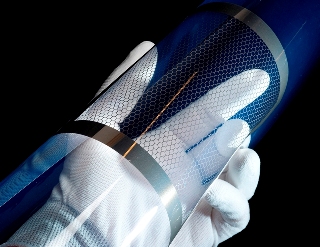Jul 3 2015
The researcher Sandra Casillas from the Technological Institute of La Laguna (ITL), in the north of Mexico, has managed to patent 20 projects, and an example of her work is the design of two Tandem cells that turns windows into a solar panel capable of capturing up to eight volts per square meter of light and allows to recharge electronics. It is also transparent, allowing visibility.
 Turning a window to a solar cell
Turning a window to a solar cell
Sandra Casillas, professor of the ITL in Torreon, Coahuila (northern state of Mexico) explains that for this project she combined two materials to create the cells and increase effectiveness when capturing energy. The first is made of copper and zinc, and the second of selenium and tellurium, the latter is more efficient due to the conducting characteristics of metals.
Its benefits are instant, just by placing it in the window and connecting both copper wires allows to make use of energy. The Tandem cells are 30 percent cheaper than conventional ones and only sold in Europe, referred to specialist.
She adds that the square meter will cost 350 pesos, cheap compared to solar cells that increase the price because they need space to store energy.
The researcher says that creating the film of the cell was based on food packages, which consist of three layers. "We use this technology in the Tandem cell to generate transparent polymer layers".
She took as a reference the plastic SBS (Styrene-Butadiene-Styrene), which allows the passage of oxygen on both sides of the glass and allows to see through it, even if there is much humidity in the room it does not bead up. "What we did was to put nanoparticles of different materials and between the glass and the cell we placed a magnesium tunnel that stops the window from heating".
The specialist in materials engineering relates that this material was used after the attacks of September 11 in the United States. "The Americans did not like receiving vegetables in a packaging with holes, we used to send wrapped lettuce with polyethylene, which has those little holes to prevent oxidation, but had to resort to engineering to use another material with the same function, then the SBS came, it looks like polyethylene but allows the passage of oxygen and preserves vegetables".
Sandra Casillas, who organizes the Expo Science in Coahuila, and the north of Durango, says that there is little financial support for research at the upper secondary level and the industry at Torreon was who contributed to make the projects.
Such is the case of the Peñoles Industry (producer of minerals), which provided magnesium, selenium and tellurium metals for the two Tandem cells; however, the project has just received funding from the National Fund for Scientific Research and Technology (FONCyT), income spent on making the latest laboratory tests and obtain patents. (Agencia ID)